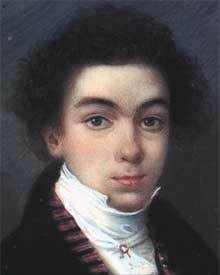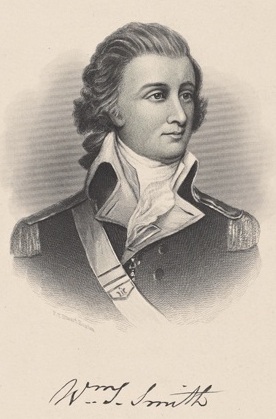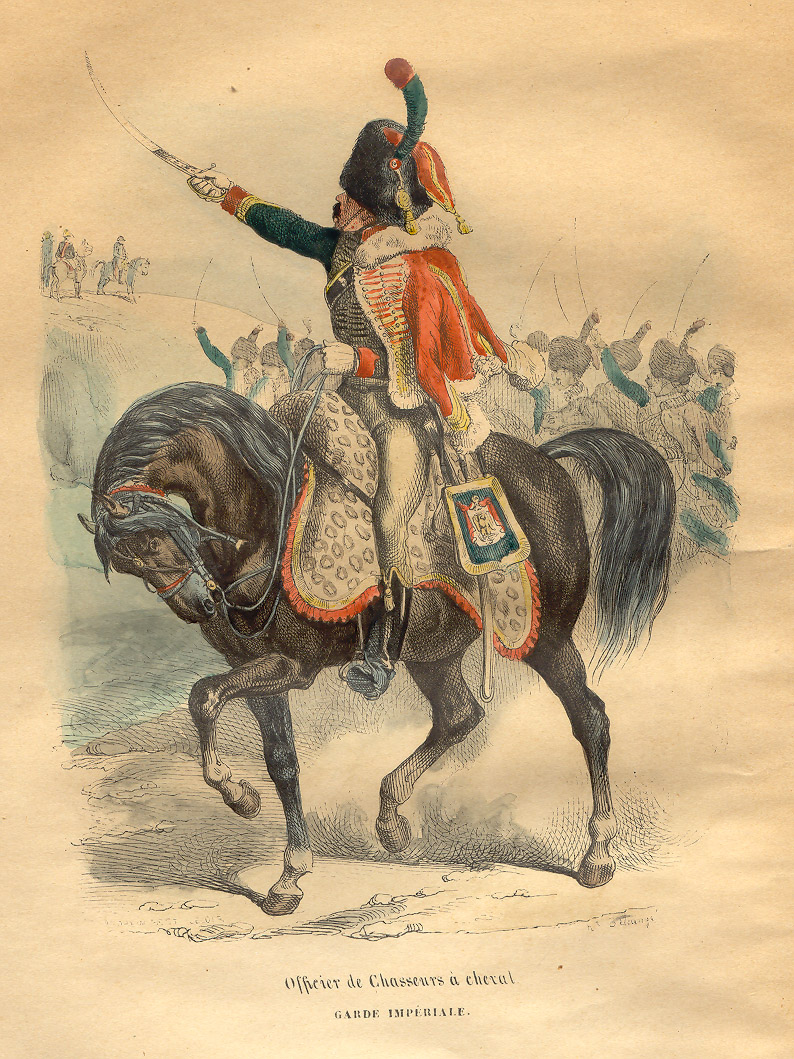|
Manuel Roergas Serviez
Emmanuel Roërgas de Serviez (Cutry (Meurthe-et-Moselle), May 16, 1785 – Apure, November 30, 1816), known by the Hispanicized name of Manuel Roergas de Serviez, was a French soldier and adventurer who participated in the wars of independence in South America. Born to a noble family in France, Serviez served in the French Army during the French Revolutionary Wars and Napoleonic Wars. In 1809 he left the French army and would later end up in South America participating in the Venezuelan and Colombian wars of independence. He became a colonel in the army of the United Provinces of New Granada and played a pivotal part in the Patriot army victory at the Battle of the Palo River. He would later be named commander of the armies of the republic during the Spanish reconquest of New Granada in 1816, he disobeyed government orders to retreat to the south and instead withdrew with what was left of the Patriot army to the eastern plains of the Casanare Province, saving many of th ... [...More Info...] [...Related Items...] OR: [Wikipedia] [Google] [Baidu] |
Cutry, Meurthe-et-Moselle
Cutry () is a commune in the Meurthe-et-Moselle department Department may refer to: * Departmentalization, division of a larger organization into parts with specific responsibility Government and military *Department (administrative division), a geographical and administrative division within a country, ... in north-eastern France. See also * Communes of the Meurthe-et-Moselle department References Communes of Meurthe-et-Moselle {{MeurtheMoselle-geo-stub ... [...More Info...] [...Related Items...] OR: [Wikipedia] [Google] [Baidu] |
José María Córdova
José María Córdova Muñoz, also known as the ''"Hero of Ayacucho"'', was a General of the Colombian army during the Independence War of Colombia, Perú, and Bolivia from Spain. Biographic data Córdova was born in Concepción, Antioquia on September 8, 1799. He died in Santuario, Antioquia, on October 17, 1829.Arismendi Posada, Ignacio; ''Gobernantes Colombianos'', trans. Colombian Presidents; Interprint Editors Ltd.; Italgraf; Segunda Edición; Page 73; Bogotá, Colombia; 1983 Military career Córdova's military career began in 1814, when he joined the newly formed Engineer Corps in the province of Antioquia, which had just been established by Francisco José de Caldas in Medellín. Cordova's interest in the military and the revolutionary cause had been stoked by the Colombian declaration of independence, as well as Antioquia's own declaration of independence as the "Republic of Antioquia" or the "Free and Sovereign State of Antioquia." In 1815, Córdova then also e ... [...More Info...] [...Related Items...] OR: [Wikipedia] [Google] [Baidu] |
Free And Independent State Of Cundinamarca
The Free and Independent State of Cundinamarca (Spanish: ''Estado Libre e Independiente de Cundinamarca'') was a rebel state in colonial Colombia, replacing the Spanish colonial Viceroyalty of New Granada from 1810 to 1815. It was part of the Foolish Fatherland (''Patria Boba'') period at the beginning of the Spanish American wars of independence. Its capital was Bogotá, the former capital of the Viceroyalty of New Granada. Following the occupation of Spain during the Napoleonic Wars, Cundinamarca was one of the states (such as United Provinces of South America (Argentina) and the First Republic of Venezuela) who replaced its viceregal government with a local ''junta'' in the name of the deposed Ferdinand VII. Following the creation of juntas all over New Granada, the provinces started establishing their own autonomous governments. Unable to unify them into a single state, the Junta Suprema in Santafé (the former vice-royal capital and the center of the Province of Cundinamar ... [...More Info...] [...Related Items...] OR: [Wikipedia] [Google] [Baidu] |
Simón Bolívar
Simón José Antonio de la Santísima Trinidad Bolívar y Palacios (24 July 1783 – 17 December 1830) was a Venezuelan military and political leader who led what are currently the countries of Colombia, Venezuela, Ecuador, Peru, Panama and Bolivia to independence from the Spanish Empire. He is known colloquially as '' El Libertador'', or the ''Liberator of America''. Simón Bolívar was born in Caracas in the Captaincy General of Venezuela into a wealthy criollo family. Before he turned ten, he lost both parents and lived in several households. Bolívar was educated abroad and lived in Spain, as was common for men of upper-class families in his day. While living in Madrid from 1800 to 1802, he was introduced to Enlightenment philosophy and met his future wife María Teresa Rodríguez del Toro y Alaysa. After returning to Venezuela, in 1803 del Toro contracted yellow fever and died. From 1803 to 1805, Bolívar embarked on a grand tour that ended in Rome, where he swore to end ... [...More Info...] [...Related Items...] OR: [Wikipedia] [Google] [Baidu] |
Medellín
Medellín ( or ), officially the Municipality of Medellín ( es, Municipio de Medellín), is the second-largest city in Colombia, after Bogotá, and the capital of the department of Antioquia. It is located in the Aburrá Valley, a central region of the Andes Mountains in South America. According to the National Administrative Department of Statistics, the city had an estimated population of 2,508,452 according to the 2018 census. With its surrounding area that includes nine other cities, the metropolitan area of Medellín is the second-largest urban agglomeration in Colombia in terms of population and economy, with more than 4 million people. In 1616, the Spaniard Francisco Herrera Campuzano erected a small indigenous village ("''poblado''") known as " Saint Lawrence of Aburrá" (''San Lorenzo de Aburrá''), located in the present-day El Poblado commune. On 2 November 1675, the queen consort Mariana of Austria founded the "Town of Our Lady of Candelaria of Medellín" (''Vil ... [...More Info...] [...Related Items...] OR: [Wikipedia] [Google] [Baidu] |
Cartagena, Colombia
Cartagena ( , also ), known since the colonial era as Cartagena de Indias (), is a city and one of the major ports on the northern coast of Colombia in the Caribbean Coast Region, bordering the Caribbean sea. Cartagena's past role as a link in the route to West Indies provides it with important historical value for world exploration and preservation of heritage from the great commercial maritime routes. As a former Spanish colony, it was a key port for the export of Bolivian silver to Spain and for the import of enslaved Africans under the asiento system. It was defensible against pirate attacks in the Caribbean. The city's strategic location between the Magdalena and Sinú Rivers also gave it easy access to the interior of New Granada and made it a main port for trade between Spain and its overseas empire, establishing its importance by the early 1540s. Modern Cartagena is the capital of the Bolívar Department, and had a population of 1,028,736, according to the 2018 ce ... [...More Info...] [...Related Items...] OR: [Wikipedia] [Google] [Baidu] |
Francisco De Miranda
Sebastián Francisco de Miranda y Rodríguez de Espinoza (28 March 1750 – 14 July 1816), commonly known as Francisco de Miranda (), was a Venezuelan military leader and revolutionary. Although his own plans for the independence of the Spanish American colonies failed, he is regarded as a forerunner of Simón Bolívar, who during the Spanish American wars of independence successfully liberated much of South America. He was known as "The First Universal Venezuelan" and "The Great Universal American". Miranda led a romantic and adventurous life in the general political and intellectual climate that emerged from the Age of Enlightenment that influenced all of the Atlantic Revolutions. He participated in three major historical and political movements of his time: the American Revolutionary War, the French Revolution and the Spanish American wars of independence. He described his experiences over this time in his journal, which reached to 63 bound volumes. An idealist, he develope ... [...More Info...] [...Related Items...] OR: [Wikipedia] [Google] [Baidu] |
Venezuela
Venezuela (; ), officially the Bolivarian Republic of Venezuela ( es, link=no, República Bolivariana de Venezuela), is a country on the northern coast of South America, consisting of a continental landmass and many islands and islets in the Caribbean Sea. It has a territorial extension of , and its population was estimated at 29 million in 2022. The capital and largest urban agglomeration is the city of Caracas. The continental territory is bordered on the north by the Caribbean Sea and the Atlantic Ocean, on the west by Colombia, Brazil on the south, Trinidad and Tobago to the north-east and on the east by Guyana. The Venezuelan government maintains a claim against Guyana to Guayana Esequiba. Venezuela is a federal presidential republic consisting of 23 states, the Capital District and federal dependencies covering Venezuela's offshore islands. Venezuela is among the most urbanized countries in Latin America; the vast majority of Venezuelans live in the cities of the n ... [...More Info...] [...Related Items...] OR: [Wikipedia] [Google] [Baidu] |
Battle Of Vimeiro
In the Battle of Vimeiro (sometimes shown as "Vimiera" or "Vimeira" in contemporary British texts) on 21 August 1808, the British under General Arthur Wellesley (who later became the Duke of Wellington) defeated the French under Major-General Jean-Andoche Junot near the village of Vimeiro (), near Lisbon, Portugal during the Peninsular War. This battle put an end to the first French invasion of Portugal. Four days after the Battle of Roliça, Wellesley's army was attacked by a French army under General Junot near the village of Vimeiro. The battle began as a battle of manoeuvre, with French troops attempting to outflank the British left, but Wellesley was able to redeploy his army to face the assault. Meanwhile, Junot sent in two central columns but these were forced back by sustained volleys from troops in line. Soon afterwards, the flanking attack was beaten off and Junot retreated towards Torres Vedras, having lost 2,000 men and 13 cannon, compared to 700 Anglo-Portug ... [...More Info...] [...Related Items...] OR: [Wikipedia] [Google] [Baidu] |
Peninsular War
The Peninsular War (1807–1814) was the military conflict fought in the Iberian Peninsula by Spain, Portugal, and the United Kingdom against the invading and occupying forces of the First French Empire during the Napoleonic Wars. In Spain, it is considered to overlap with the Spanish War of Independence. The war started when the French and Spanish armies invaded and occupied Portugal in 1807 by transiting through Spain, and it escalated in 1808 after Napoleonic France occupied Spain, which had been its ally. Napoleon Bonaparte forced the abdications of Ferdinand VII and his father Charles IV and then installed his brother Joseph Bonaparte on the Spanish throne and promulgated the Bayonne Constitution. Most Spaniards rejected French rule and fought a bloody war to oust them. The war on the peninsula lasted until the Sixth Coalition defeated Napoleon in 1814, and is regarded as one of the first wars of national liberation. It is also significant for the emergence of larg ... [...More Info...] [...Related Items...] OR: [Wikipedia] [Google] [Baidu] |
Mounted Chasseurs Of The Imperial Guard
The Mounted Chasseurs of the Imperial Guard () constituted a light cavalry regiment in the Consular, then Imperial Guard during the French Consulate and First French Empire respectively. They were the second senior "Old Guard" cavalry regiment of the Imperial Guard, after the '' Grenadiers à Cheval''. The regiment had its origins in the Guides raised by General Bonaparte during his Italian Campaign of 1796. It was the Chasseurs that usually provided personal escort to Napoleon, and he often wore the uniform of the regiment in recognition of this service. The regiment was not only known for its lavish uniform, but its combat history as well. Service history When at the end of August 1799 Bonaparte left Egypt to return to France, he took with him a detachment of 180 ''Guides à cheval'' and 125 ''Guides à pied''. The men chosen were the most devoted veterans from each company. Soon after the ''coup d'état'' of 18 Brumaire, the Guides, who had stayed in the south of France, were ... [...More Info...] [...Related Items...] OR: [Wikipedia] [Google] [Baidu] |
Army Of Italy (France)
The Army of Italy (french: Armée d'Italie) was a field army of the French Army stationed on the Italian border and used for operations in Italy itself. Though it existed in some form in the 16th century through to the present, it is best known for its role during the French Revolutionary Wars (in which it was one of the early commands of Napoleon Bonaparte, during his Italian campaign) and Napoleonic Wars. History Bonaparte's reforms Poorly supplied (uniforms and shoes were rare), and only getting reinforcements irregularly, the Army of Italy was sometimes reduced to looting to survive. When Bonaparte arrived (he took up command on 27 March 1796), indiscipline was rife. Chouan songs were sung by the troops, and a company of the Dauphin was formed. All the while improving the supply system as much as possible, Bonaparte also reestablished discipline. He condemned officers who had cried ''Vive le roi !'', (English: "Live the king!"), dismissed the 13th regiment of hussa ... [...More Info...] [...Related Items...] OR: [Wikipedia] [Google] [Baidu] |



